- News
- Reviews
- Bikes
- Accessories
- Accessories - misc
- Computer mounts
- Bags
- Bar ends
- Bike bags & cases
- Bottle cages
- Bottles
- Cameras
- Car racks
- Child seats
- Computers
- Glasses
- GPS units
- Helmets
- Lights - front
- Lights - rear
- Lights - sets
- Locks
- Mirrors
- Mudguards
- Racks
- Pumps & CO2 inflators
- Puncture kits
- Reflectives
- Smart watches
- Stands and racks
- Trailers
- Clothing
- Components
- Bar tape & grips
- Bottom brackets
- Brake & gear cables
- Brake & STI levers
- Brake pads & spares
- Brakes
- Cassettes & freewheels
- Chains
- Chainsets & chainrings
- Derailleurs - front
- Derailleurs - rear
- Forks
- Gear levers & shifters
- Groupsets
- Handlebars & extensions
- Headsets
- Hubs
- Inner tubes
- Pedals
- Quick releases & skewers
- Saddles
- Seatposts
- Stems
- Wheels
- Tyres
- Health, fitness and nutrition
- Tools and workshop
- Miscellaneous
- Tubeless valves
- Buyers Guides
- Features
- Forum
- Recommends
- Podcast
review
£300.00
VERDICT:
Quiet turbo trainer with progressive resistance that results in a road-like feel
Weight:
8,540g
Contact:
At road.cc every product is thoroughly tested for as long as it takes to get a proper insight into how well it works. Our reviewers are experienced cyclists that we trust to be objective. While we strive to ensure that opinions expressed are backed up by facts, reviews are by their nature an informed opinion, not a definitive verdict. We don't intentionally try to break anything (except locks) but we do try to look for weak points in any design. The overall score is not just an average of the other scores: it reflects both a product's function and value – with value determined by how a product compares with items of similar spec, quality, and price.
What the road.cc scores meanGood scores are more common than bad, because fortunately good products are more common than bad.
- Exceptional
- Excellent
- Very Good
- Good
- Quite good
- Average
- Not so good
- Poor
- Bad
- Appalling
The CycleOps SuperMagneto Classic Series Trainer is a quiet magnetic turbo that provides a realistic feel and enough resistance for most applications.
Setting up the SuperMagneto is really easy, it's just a question of folding out the legs, locking your bike in place via a bolt-action lever, and winding the resistance unit onto your rear tyre. A clutch knob allows you to set this at exactly the right tension; as soon as it gets to that point, the lever clicks and won't tighten any further, a bit like a torque wrench.
Find your nearest dealer here
Buy this online here
You can choose from four different resistance levels: easy, road, interval and mountain. Whichever setting you use, the resistance is progressive rather than linear (see below), as it is out on the road due to wind resistance, so you get a realistic feel (this is down to a really clever design that moves the position of the magnets as you spin faster).
The easy setting lives up to its name by providing little resistance. It feels like riding on a slight descent or with the wind behind you and is a good option for warming up and cooling down.
The other three settings are where the action is. The road setting feels a lot like being on flat tarmac – surprisingly enough! – the interval setting is a little harder, and the mountain setting is harder still.
In common with most other people, I tend to use turbo sessions for riding intervals, so after warming up I've been spending most of my time in the interval and mountain settings. You have to get off your bike and swap between resistance levels on the unit itself – there's no remote lever – which is a bit of a pain but, of course, you can also use the gears on your bike to alter the level of difficulty. I've got into the habit of selecting the resistance level I wanted for my main set and just going to one of the lowest gears on the bike for my warm up and cool down, rather than altering the settings on the resistance unit during the ride.
With the SuperMagneto Classic in the most difficult mountain setting, and a 53x11 gear on the bike, I could only manage to pedal at 59rpm for a minute, so the level of resistance on offer here is pretty high. Sprinters might want more resistance for really intense blasts but this should be enough for the kind of intervals that most people are likely to perform on a regular basis.
>> Check out our guide to the best turbo trainers here
Even when riding in a big gear at a low cadence, this turbo feels smooth thanks to a heavy flywheel that maintains its momentum. It's quiet too. CycleOps claims that the noise level at 20mph is 69-70 decibels – about the level of a dishwasher – but it doesn't say where that measurement is taken. I downloaded a sound-measuring app and positioned my phone 3m from the resistance unit. The highest reading I got was 74 decibels, which is about as noisy as a vacuum cleaner, and some of that noise is actually from your drivetrain rather than the turbo itself. People in the next room will hear that you're on the bike but it's not like you're going to drown out the Six O'Clock News.
The trainer will take bikes with the most common rear dropout spacings – 120mm, 130mm and 135mm – and it'll accommodate wheel sizes from 650B right up to 29in. The machined alloy roller can handle tyres up to 2.25in.
Folded down, the SuperMagneto Classic measures 49 x 48 x 29cm so it's easy to tuck away in a corner when not in use. It weighs 8.54kg (18.8lb) so it's relatively easy to carry about, if you want to sling it in the boot of your car for warming up before a race, for example.
Verdict
Quiet turbo trainer with progressive resistance that results in a road-like feel
road.cc test report
Make and model: CycleOps SuperMagneto Classic Series Trainer
Size tested: n/a
Tell us what the product is for, and who it's aimed at. What do the manufacturers say about it? How does that compare to your own feelings about it?
CycleOps says, "The Classic SuperMagneto is built for tri-geeks, podium chasers and first time finishers alike with its unmatched versatility. Featuring four resistance curves: easy, road, interval and mountain, it's easy to customize workouts for any goal no matter how modest or ambitious they may be. And if you plan to share a trainer with another rider, then look no further. Built on our tried and test classic frame, this model gets a wide range for bikes from Road, Tri & MTB."
The resistance is progressive. Here's how CycleOps explains that term:
"When you're riding your bicycle outside, wind resistance increases exponentially according to your speed. That's why it is more than twice as difficult to ride at 20mph than at 10mph.
"However, not all bike trainers create resistance the same way. Here's a brief breakdown to help you choose which will work best for you.
"Linear resistance means that when you pedal faster or shift gears on your bike, the resistance changes proportionately to your change in speed. This type of resistance feels least like riding outside.
"Adjustable resistance allows you to choose from various levels of linear resistance on the trainer.
"Progressive resistance is much more "true to the road" because when you pedal faster or shift gears, the resistance increases just as it would out on the road.
"Controlled resistance offers you the ability to predefine workouts with varying degrees of resistance that are managed by a compatible head unit (like the PowerTap Joule GPS), the CycleOps VirtualTraining app, or other compatible apps. The trainer then adjusts as you pedal."
Tell us some more about the technical aspects of the product?
CycleOps lists these features:
* Progressive magnetic resistance unit provides a quiet and frictionless ride.
* Large flywheel offers incredible road-like feel.
* Comes on the CycleOps foldable Classic frame with spring loaded, bolt-action lever.
* Four resistance settings for every rider type and ride type in one trainer.
* Easy setting: Warm up before you ride hard.
* Road setting: Ride all day to build volume and build a sweat.
*Interval setting: Step up to a more intense workout.
*Mountain setting: Take on the trainer's most challenging ride.
* PowerTuned for optimal road-like feel.
* Progressive magnetic resistance unit provides a quiet and frictionless ride.
* Features clutch knob for perfect roller to tire tension each ride.
* 2in resistance unit roller allows for 650b, 700c, 26in, 27in and 29in wheel sizes.
* Will fit 29in wheels up to 2.25in width, depending on tire tread.
* Easy adjustments for ride or rider type.
* Noise level at 20 mph is a quiet 69-70 decibels.
* Single-leg levelling adjustment allows for easy adjustment on uneven surfaces.
* Precision-machined alloy roller reduces tire wear and slippage.
* This trainer is designed to fit common road and mountain bike frames with included steel quick release skewer and has three settings for rear dropout
spacing: 120mm, 130mm and 135mm.
* Trainer tyre recommended.
* CycleOps VirtualTraining compatible.
* Lifetime Warranty
Rate the product for quality of construction:
7/10
It's a stable trainer and the resistance unit is a good 'un.
Rate the product for performance:
8/10
Rate the product for durability:
8/10
It's well built. If anything does happen, you have a lifetime warranty.
Rate the product for value:
7/10
It is pricey but the magnetic resistance unit is very good.
Tell us how the product performed overall when used for its designed purpose
It does the job really well. Some people might want a little bit more top-end resistance, but it's a good trainer for most uses.
Tell us what you particularly liked about the product
The realistic feel and smooth performance.
Tell us what you particularly disliked about the product
The need to get off the bike to change the level of resistance (rather than using a remote lever) could be a seen as a problem although, in reality, using the mountain setting and your full gear range will likely give you all the different levels of resistance you need to warm up and then go through a tough interval session.
Did you enjoy using the product? Yes
Would you consider buying the product? Yes
Would you recommend the product to a friend? Yes
Use this box to explain your score
This is clearly a very good turbo that I'd recommend for most types of training. It is expensive but the progressive resistance makes it a winner.
About the tester
Age: 43 Height: 190cm Weight: 75kg
I usually ride: My best bike is:
I've been riding for: Over 20 years I ride: Most days I would class myself as: Expert
I regularly do the following types of riding: commuting, club rides, sportives, general fitness riding
Mat has been in cycling media since 1996, on titles including BikeRadar, Total Bike, Total Mountain Bike, What Mountain Bike and Mountain Biking UK, and he has been editor of 220 Triathlon and Cycling Plus. Mat has been road.cc technical editor for over a decade, testing bikes, fettling the latest kit, and trying out the most up-to-the-minute clothing. He has won his category in Ironman UK 70.3 and finished on the podium in both marathons he has run. Mat is a Cambridge graduate who did a post-grad in magazine journalism, and he is a winner of the Cycling Media Award for Specialist Online Writer. Now over 50, he's riding road and gravel bikes most days for fun and fitness rather than training for competitions.
Latest Comments
- David9694 6 hours 20 min ago
I hope you're all checking your insurance policies, helmets, test certificates and road tax, it's the 2024 round-up...
- check12 8 hours 1 min ago
200 people out of a close by population of how many? Just build it and stop being a wuss
- Spangly Shiny 9 hours 34 min ago
To paraphrase Field of Dreams, "Build it right and they will come: and use it!"
- Rendel Harris 11 hours 55 min ago
And a Happy Christmas to you, road.cc staff!
- Rendel Harris 12 hours 43 min ago
The odds of not being able to find a single pedestrian - just one, note, "any pedestrian" - in an area containing more than about ten of them who...
- bikeman01 14 hours 22 min ago
I love how wannabe racer reviewers talk about fork flex under braking like their tyres are made of glue. I find traction gives long before fork flex.
- hawkinspeter 15 hours 29 min ago
They don't make them like they used to
- LongitudeLatitude 16 hours 19 min ago
Thanks for using my picture of chocolate in your opening picture. The original can be found here, chocolate! | LongitudeLatitude | Flickr.
- lesterama 16 hours 46 min ago
Fair comments. I'll put my hands up and say I got the wrong end of the stick with this one. ¡Feliz navidad! Here's a pic for the season of goodwill.
- Mike Holmes 16 hours 51 min ago
A trip down memory lane (or street) for me - Harry Quinn's bike shop was at the top of our Street and I used to spend time staring at the bikes and...









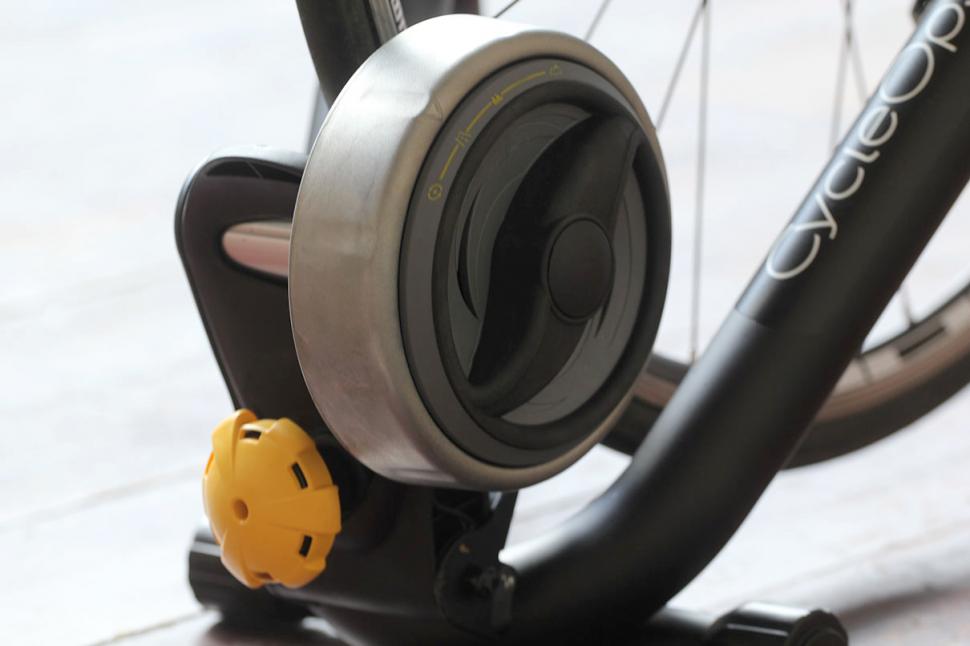

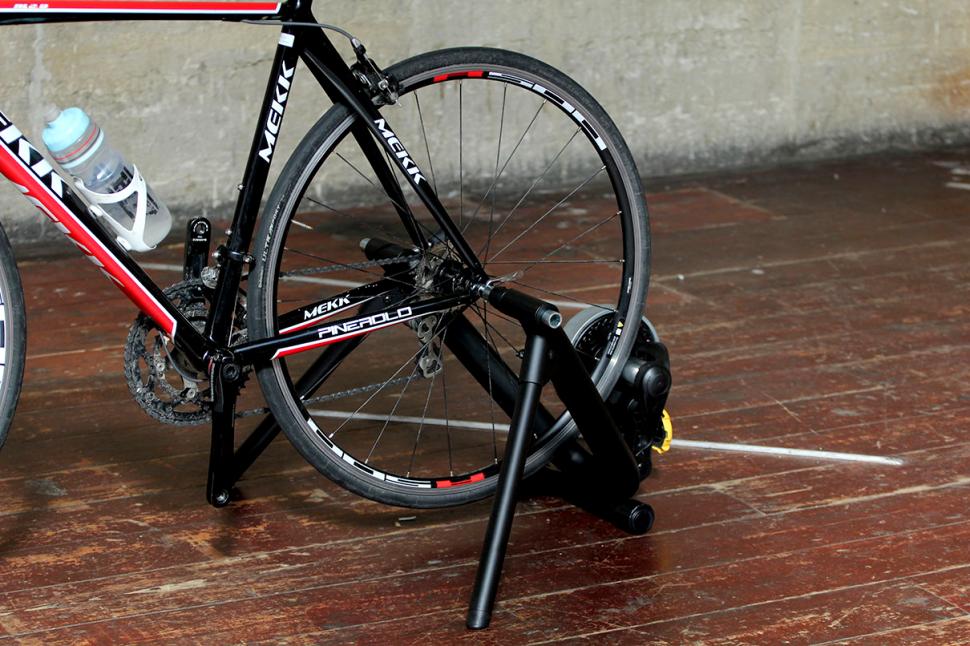
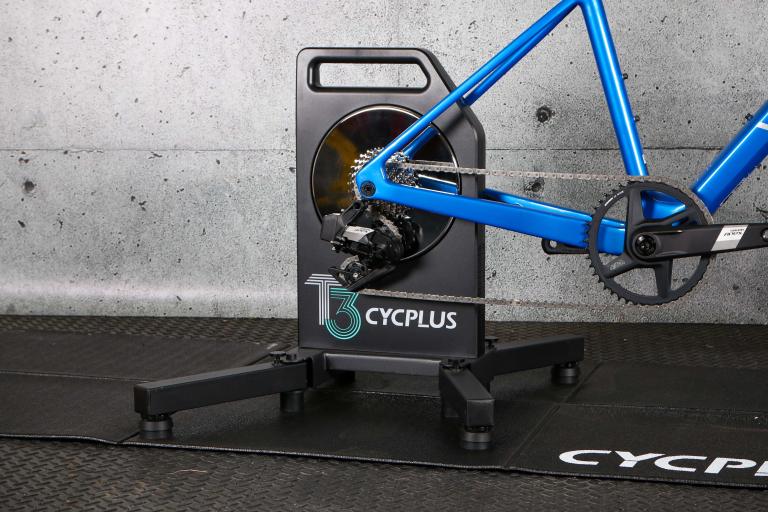
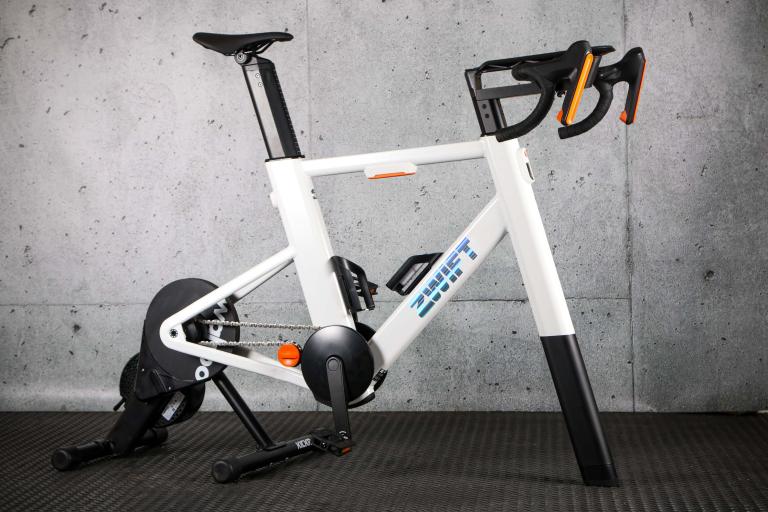

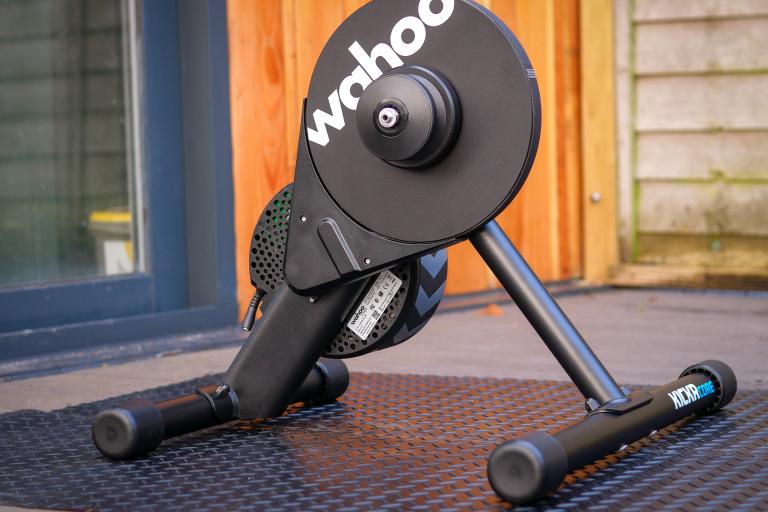
Add new comment
2 comments
Yes, in virtual power curve mode with an ANT+ speed and cadence sensor
Yes, but will it work with Zwift?